Introduction
The English language continues to function as a form of linguistic capital in former British colonies. Although previous studies on World English lexicon documented how and what English lexical items entered another language, few studies have been conducted to investigate the typology of lexical interaction between two postcolonial English varieties. This paper aims to describe how Cantonese-origin English culinary lexical terms were spread from either Hong Kong or Singapore, whilst illustrating the possible multitrajectory pathways of lexical interaction in the Cantophone world by demonstrating five types of translingual practices of food words with Cantonese roots. The lexical examples of food words discussed in this paper were taken from Instagram, Google Map, Google Search, Google Trends, and Oxford English Dictionary. Drawing on the theoretical notion of the ‘sunflower model’, this qualitative study argues that Sinograph (a logographic written system; also known as Honzi) is a space of mediation, which plays an influential role in shaping the trajectories of culinary lexical terms across multilingual Asia. Findings also suggest that individuals’ multilingual competencies and the bidirectional influences between two Sinitic varieties (Cantonese and Mandarin) could shape spelling variations and conventions in Asian Englishes.
This study focuses on Hong Kong and Singapore, which are both ethnic Han Chinese-dominant societies. These two former British colonies are traditionally categorised as Outer Circle English-using societies where English, to a varying extent, is widely used in different domains (see Bolton & Bacon–Shone, Reference Bolton, Bacon–Shone, Bolton, Botha and Kirkpatrick2020: 51). These two world-renowned ‘Gourmet Paradises’ not only offer a wide variety of local and international cuisines for foodies, but also provide rich linguistic repertoires on different kinds of Asian food. These unique sociocultural and sociolinguistic commonalities across Hong Kong and Singapore, especially against the larger forces of English as a global lingua franca and increased transnational mobility, have rendered them ideal sites for lexical creativity and translinguality, especially in the domain of culinary lexicon created and rapidly spread via printed and social media among multilingual speakers.
Lexical interaction and the creation of translingual food words in Asian Englishes
Words are easily integrated into another language with some degree of modification in a globalised era. As Kiaer (Reference Kiaer2019: 34) defines it, a translingual word is a kind of word that ‘belongs to multiple languages as a result of word migration and hybridisation’ (see also Khedun–Burgoine & Kiaer, Reference Khedun–Burgoine and Kiaer2023: 67–74). In particular, the English culinary lexicon characteristic of multilingual Asia contains diverse food and drink terms, as well as cooking styles and dinning habits. These kinds of words can be shared by two or more lexicons and may have undergone word formation processes in a localised and innovative way (see Tam & Tsang, Reference Tam and Tsang2023). For example, the Cantonese-origin collective noun dimsum (also known as dim sum) refers to Cantonese dishes prepared and served on small plates and bamboo steamers. It is now widely accepted as part of the English lexicon and it is possible to even attach a plural suffix -s to form a plural noun dimsums in English, instead of functioning as a default zero (∅︀) marker. In addition, the world-renowned noun yumcha (a kind of Cantonese tradition of brunch) has experienced semantic change recently. The progressive verbal suffix -ing can be attached to form a verb yumchaing on social media in Singapore. This kind of English word is often labelled as ‘loanword’; however, as argued, this label is problematic in understanding lexical formation across multilingual societies in late modernity (see Kiaer & Bordilovskaya, Reference Kiaer and Bordilovskaya2017). This is so because this type of word has partially (sometimes fully) undergone transformation and hybridisation in a localised context, not directly borrowing from other languages.
Lexical interaction refers to the linguistic phenomenon of how multiple shared words and new words are produced between languages (see Kiaer, Reference Kiaer2019: 43–44). In order to capture the commonalities and diversities of various types of translingual words of Cantonese-origin food in Hong Kong and Singapore, this study adopts Kiaer's (Reference Kiaer2019) ‘sunflower model’ as a theoretical framework (see also Ahn & Kiaer, Reference Ahn and Kiaer2021; Kiaer, Reference Kiaer2020). She argues that the dark core part of the sunflower is the translingual words among the language varieties (including dialects and idiolects), which coexist in different languages (see Figure 1). As the sunflower is growing with more nourishing petals (i.e. different language varieties), the dark core part will be expanding and yielding more seeds. This could also mean, the shared translingual words are more diverse with the increasing complexity of lexical interaction. She also emphasises that English lexicons are unconventional and unpredictable due to their rapid spread via the internet. That said, this notion conveys a new aspect in understanding lexical formation in a globalised age, whilst providing new insights into the lexical creativity of Asian Englishes across the Cantophone world.

Figure 1. The sunflower model of lexical interaction (Kiaer, Reference Kiaer2019: 45)
Cantonese food is one of the elements in the building of ethnocultural identity for Cantonese people (see Klein, Reference Klein2007; Wang, Reference Wang2021; Wong, Reference Wong2017: 117–118). Cantonese dimsum is commonly found in traditional Cantonese restaurants (also known as tea houses). A tea house is not only a dining venue but also a leisure and social place for people. To meet the communicative demands with foreign workers and international tourists, most Cantonese restaurants in Hong Kong and Singapore provide bi/multilingual menus to their customers. The need to create English equivalents for Cantonese-origin culinary terms could potentially facilitate translingual practices. However, due to sociocultural subtleties and diverse mores, finding a precise term for Cantonese food is very challenging. Therefore, Cantonese restaurants could be a potential site to facilitate importation of Cantonese culinary terms into the English lexicon. This paper aims to provide an empirical glimpse of culinary terms, both highly-conventionalised and newly-emerging, that are frequently used in Asian Englishes.
Profiling Cantonese-English bilinguals in Hong Kong and Singapore
The Cantonese people are an East Asian ethnic Han subgroup native to the Southern seashore China. The Cantonese population consists of around 89 million people worldwide, seven million of whom live in Hong Kong and 420 thousand in Singapore. Nowadays, the Cantonese language (also known as Gwongdungwaa) has retained its prestige status in contemporary Hong Kong, Macau and its surrounding region. Cantonese is widely used as an unmarked language of intra-ethnic spoken in both high and low societal domains of Hong Kong, such as on media, and at K-12 educational levels. The government of Hong Kong SAR has been actively promoting the ‘biliteracy and trilingualism’ language policy since 1998. Therefore, English and Mandarin (the national language of China; also known as Poutungwaa in Hong Kong) are also compulsory subjects in primary and secondary schools. However, the use of English in Hong Kong is limited in business and higher education domains. Unlike Hong Kong, Singapore is a city-state nation located in Southeast Asia, which is also an English-dominant multilingual society. English is the only administrative language used in Singapore. Meanwhile, Cantonese use is restricted with Mandarin (one of the four official languages of Singapore, also known as Waajyu in Southeast Asia) adopted as the official Chinese language in primary and secondary education by the government of Singapore. Among Han-Chinese Singaporean households, Cantonese is the third-most spoken varieties of Sinitic after Mandarin and Hokkien (Statistics Department of Singapore, 2021).
Given the close commercial and cultural ties between Hong Kong and Singapore, the bidirectional influence of lexical interaction is nuanced and could happen via different channels. It should be noted that non-Cantonese people who are living in Singapore, might be proficient in Cantonese due to the strong influence of Hong Kong pop culture, such as music and movies (see Lim, Reference Lim2007). Similarly, Cantonese people who have lived in Hong Kong, even though they may speak only Cantonese, tend to be at least passively Cantonese-English-Mandarin multilingual to some degree, as they will have had extensive exposure to the two languages through media and public language use (see Ng & Cavallaro, Reference Ng, Cavallaro, Montanari and Quay2019, for detailed discussion of multilingualism in these two cities). Notably, the multilingual competences can facilitate language contact within the linguistic communities. The two local colloquial English varieties, Kongish and Singlish, have extensive divergence from ‘standard English’, and there seems to be a continuum that shows their own distinctive syntactic and lexical features. Hong Kong and Singapore therefore present interesting cases because (i) the degree of multilingual proficiency among the residents, and (ii) the visibility of English, and the two Sinitic languages are found to a very high extent across different social domains. Through both cases, we will demonstrate below how multilingualism shapes the lexical interaction between these two English varieties in an Asian context.
Case studies of five types of translingual practices of culinary words of Cantonese origin
This qualitative study, exploring lexical innovation and interaction through five key types of translingual words to demonstrate multiple trajectories in word formation, draws upon digital ethnographic methods. The materials are collected from a range of online resources including Instagram (#hashtag), Google Search, Google Map, Google Trends, and Oxford English Dictionary (2022; hereafter OED). Some photos shown below in this paper were taken from our own database comprised of photographs (taken from Singapore in 2022). The Internet offers not only a site for cross-linguistic communication but also a communicative platform less influenced by linguistic authority. It also explores the role of Sinoscript in the process of English lexical creativity in multilingual societies such as Hong Kong and Singapore.
Type I: Translation
Translation is a type of conversion of a text by means of an equivalent text, which involves a process of semantic extraction usually with cultural-sensitive considerations. This type of translingual practice is commonly found in multilingual menus in Cantonese restaurants. The translation practice of Cantonese culinary terms reflects a social norm in a given culture that can be used to exchange knowledge and indexes a shared value to English readers. For example, Figure 2 is a spherical egg-based waffle which consists of semi-spherical cells. The Cantonese term 雞蛋仔 (gaai daan jai) consists of three Sinographs 雞 (gaai ‘chicken’), 蛋 (daan ‘egg’), and 仔 (jai, a suffix denoting a small object with cuteness), which is commonly translated as ‘egg waffle’ in Asia. With its recent popularity across Europe and North America (see CNN, 2020), in the past few years, egg waffle is being reinvented and it has transformed as ‘(Hong Kong's) bubble waffle’ that includes a cone-wrapped egg waffle with extra topping ingredients such as ice-cream, chocolate sauce, rainbow sprinkles or fruits. This example demonstrates how a Cantonese culinary term is reconceptualised by a ‘well known’ object in another culture when there was no equivalent term in English. The translation practice could help English readers understand the food easily by what they have already known from their mental lexicon. Another example is Open Rice, which is the most popular mobile application (APP) for searching restaurants in Hong Kong. Its Cantonese name 開飯喇 (hoifaan laa) consists of three Sinographs that literally mean 開 (hoi ‘to open’), 飯 (faan ‘rice’), and 喇 (laa, a particle indicating something is about to change). This is an expression used to tell someone ‘The meal is ready’ at home, which is similar to the phrase bon appetit in English. Such ‘word-for-word’ translation practice seems also common in Hong Kong since it targets local Cantonese-speaking users. Several other examples of translated culinary terms are listed below:
• willow branch dew 楊枝甘露 (joeng-zi-gam-lou) – a type of sago dessert with mango and pomelo
• cart noodles 車仔麵 (cezai min) – a noodle dish formerly sold by street hawkers
• snow skin mooncake 冰皮月餅 (bingpei jyutbeng; also known as ‘crystal mooncake’) – a non-baked, cold mooncake
• Swiss wings 瑞士雞翼 (seoisi gaijik) – a kind of sweet soy sauce-flavored dish of chicken wings (only found in Hong Kong)
• Singapore-style rice vermicelli 星洲炒米 (singzau caau mai; literally ‘Singapore-fry-rice’) – a dish of stir-fried cooked rice vermicelli with yellow curry powder (only found in Hong Kong; see Chan, Reference Chan2019)
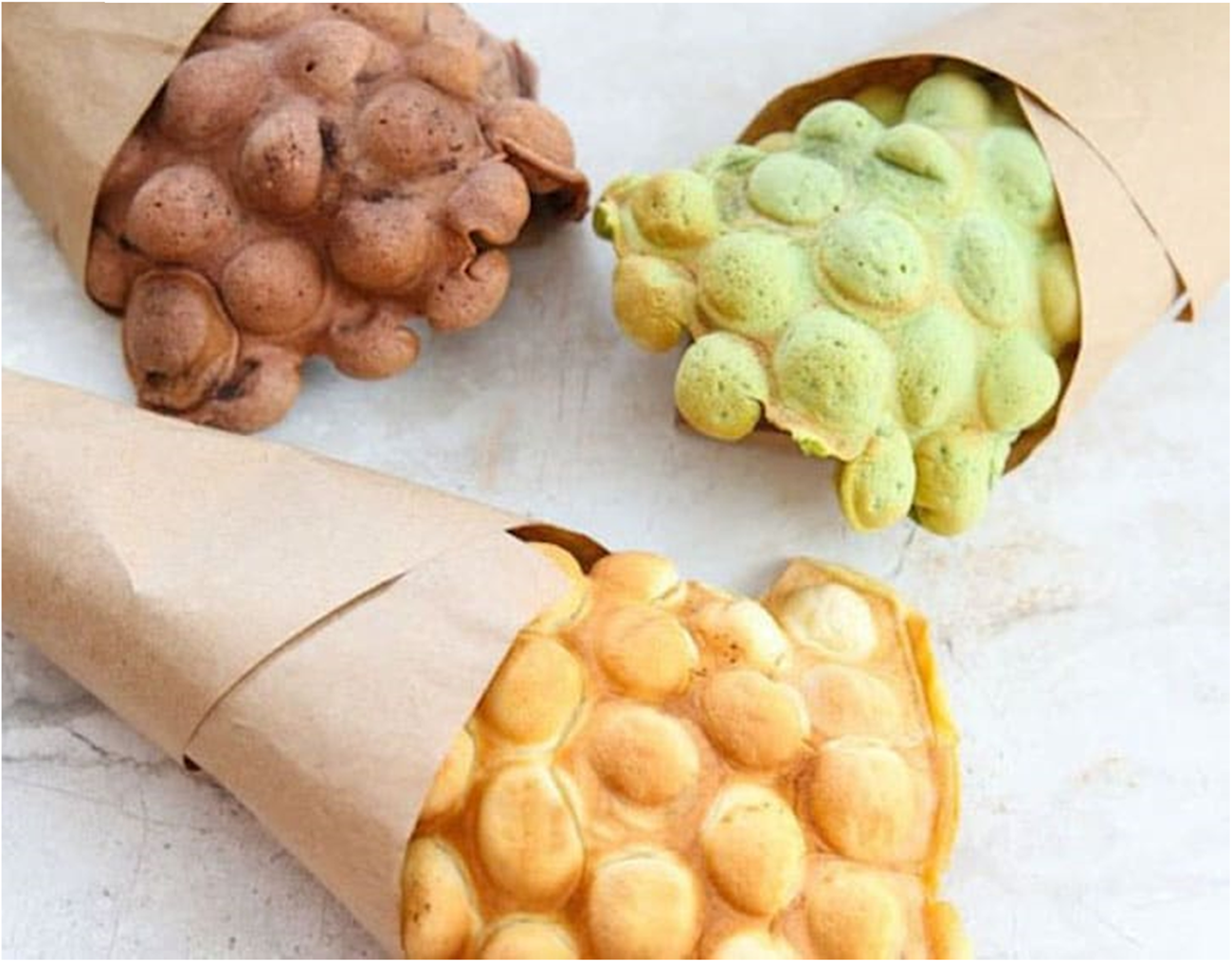
Figure 2. Bubble waffles (Sassy Mama HK, 2019)
Type II: Transliteration
Transliteration (also known as romanisation) is a type of conversion of a text from the phonetic-grapheme of a language to the alphabets of another language, which entails a process of mapping between sounds and spelling. Table 1 lists 18 words in total, including the Sinograph forms of the translingual words, their local conventional spelling (from Google Search and Google Map), the OED spelling, and the romansiation forms in Yale and LSHK (Linguistic Society of Hong Kong) systems. These 18 transliterated words are Cantonese-origin culinary items found in the OED. However, considering the lexical mobility in the contemporary Cantophone world, eight words are excluded because those words are not widely used anymore (e.g. campoi, oopack, souchong, and towcok) and some of them are mostly used in Northern America (e.g. chop suey, moo goo gai pan, and subgum). In addition, the special item hoisin ‘seafood’ was also excluded because it cannot be used as an independent morpheme (see the next section for a more detailed discussion). However, eight words commonly found on digital and real-life language use (including supermarkets and restaurants) in Hong Kong and/or Singapore are included.
Table 1. Romanisation of transliterated words in different domains
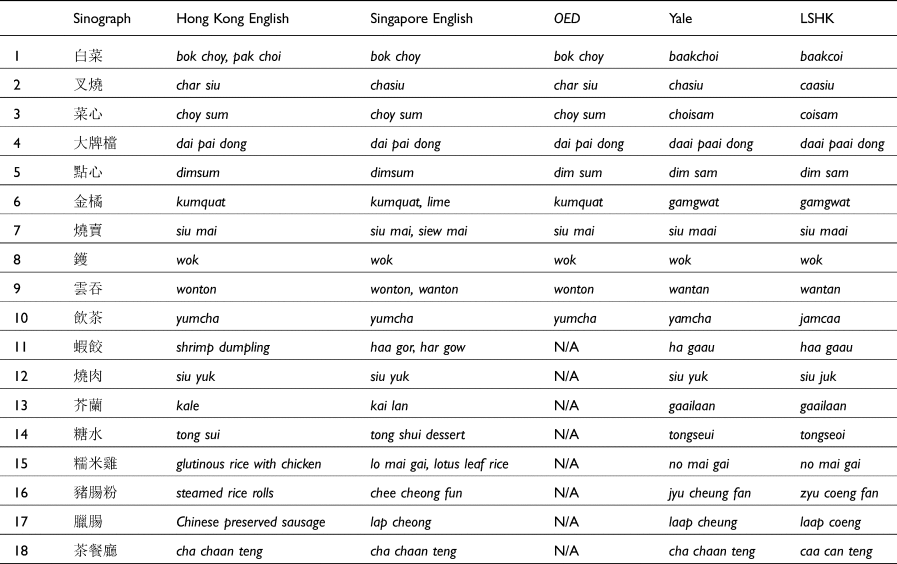
Many transliterated words have different spelling variations, but the meanings are the same (see Ahn, Reference Ahn2021). Such orthographic variants are not always consistent in either Hong Kong or Singapore. Three sociolinguistic features of Table 1 can be drawn here. First, since translingual food words are generally formed from one, two or more syllabic Sinographs, transliterated words can be with or without spacing in-between each syllable. Word spacing in such translingual words is conventional, but the bi-syllablic words are sometimes irregular. For example, barbecued pork 叉燒 can be transliterated as char siu, cha siu, charsiu, and chasiu. Separating each syllable in romanised words has a long history in Hong Kong and Singapore (such as in naming practice; see Lee, Reference Lee2011), which can be found in the documentations published during colonial governance. This is because word spacing could avoid potential misunderstanding by English readers. However, it should be noted that it goes against the conventional practice of Mandarin romanisation. It also does not align with the practice on automictic typing systems while using technological devices such as phones and computers. This phenomenon might be related to one's multilingual competence, which is strongly linked to personal experiences and cognitive recognition of orthographies in learning and reading English and Mandarin (see Hamawand, Reference Hamawand2022). Second, due to huge typological differences between the Cantonese and English writing systems, the tonal marker used to indicate the stress of a syllable does not reflect in the practice of transliteration. These transliterated food words do not follow either Yale or LSHK systems, which have their own orthographical rules in visualised tonal markers by using diacritics and numbers. Third, some words have undergone semantic change by the divergent terms through translation and transliteration. For example, in Hong Kong, ‘sticky rice chicken’ 糯米雞 (no mai gai) is a steamed sticky rice parcel with mushrooms, salted egg, and meat (chicken or pork), and its variant (smaller in size; usually served in two to three pieces) is commonly called 珍珠雞 (zan zyu gai). It has no transliterated form in Hong Kong (see Figure 3). However, in Singapore, the term lo mai gai is used to refer to ‘lotus leaf rice’ in small pieces without a leaf, which is a common breakfast dish, but ‘lotus leaf rice’ 荷葉飯 (hojip faan) is only used to refer the dish served with a lotus leaf.
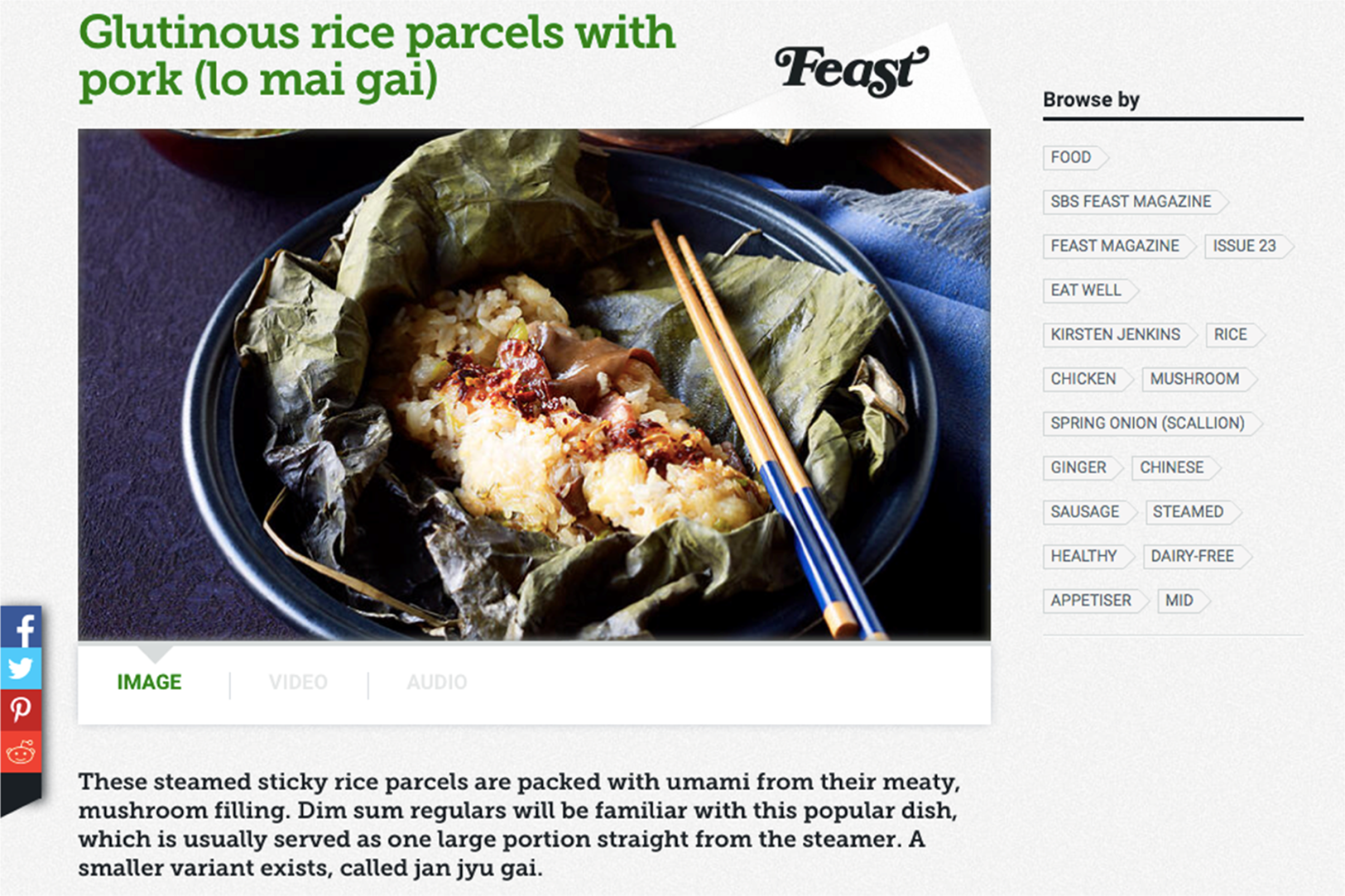
Figure 3. Glutinous rice parcels with pork (SBS Food, 2020)
One possible reason is that the Canto-Western encounter can be traced back to the late Ming dynasty in Canton city (nowadays Gwongjau) and Macau (see Bolton, Bacon–Shone & Luke, Reference Bolton, Bacon–Shone, Luke, Bolton, Botha and Kirkpatrick2020: 449). The residents in these two southern coast ports might not be well literate due to the lack of literacy education during the 17th century, and there was no systemic romanisation systems back then. In this sense, some transliterated words might originally stem from the spoken interaction between English speakers and Cantonese monolingual speakers (rather than written form), with the former hearing how the natives pronounced culinary lexical items. Another possible reason relates to the English language attitude. As Kirkpatrick and Moody (Reference Kirkpatrick and Moody2009: 268) mention in their comparative research on English songs, ‘Hong Kong people are more cultured, sophisticated, and serious than the Singaporeans’. The lexical alternation shown in Table 1 further supports the idea Hong Kong people treat those transliterated word as ‘non-standard’ English vocabulary, which implies the use of transliterated words is against sociolinguistic norms in Hong Kong. Therefore, compared with Singaporeans, Hongkongers tend to resort less to the local English variety even in informal contexts.
Type III: Hybridisation
Hybridisation refers to a translingual practice that involves a linguistically acculturated process in a localised and innovative way. The hybridised words are formed through a blend of translation and transliteration into English lexicons while transferring a new cultural concept from Cantonese to English. These words may be the outcomes of code-mixing and spread by the Cantonese-English bilinguals, which can be understood as a result of bilingual creativity and language contact (see Benson, Reference Benson2000; Lee & Li, Reference Lee, Li and Kirkpatrick2021; Leimgruber, Reference Leimgruber2013: 68–69; Moody & Matsumoto, Reference Ng, Cavallaro, Montanari and Quay2003). Bilingual speakers do not have difficulty in understanding this type of lexical item. For example, Figure 4 is a spicy seafood sauce typically including dried scallops in canola oil for home cooking. The name XO sauce (also known as X. O. sauce) is formed through combining the misnomer word XO (‘extra-old’ cognac) and the English word sauce. Although XO sauce does not contain XO cognac, the term XO is used to denote high quality and luxury for branding promotion and marketing considerations. In another example found on the Internet, char siu bun (叉燒包) is a steamed bun filled with barbecue pork, which refers to a paired food combination of barbecue pork and bun. It is a coined word combined from the Cantonese transliterated word char siu and the English word bun, rather than using either fully Cantonese transliterated form char siu baau/paw nor entirely Mandarin transliterated form chashao bao. Some hybridised culinary terms are listed below:
• hoisin sauce 海鮮醬 (hoisin zoeng) – a seafood sauce
• egg tart 蛋撻 (daantaat) – a kind of baked dish filled with egg custard
• yam ring/ taro basket 芋頭圈 (wutau hyun) – a dish of deep-fried ring of mashed taro (only found in Singapore)

Figure 4. A bottle of XO sauce and hoisin sauce in Singapore (2022)
Type IV: Tranßcripting
Tranßcripting is ‘a linguistic practice of creating a script with elements from different writing systems or by mixing conventional language scripts with other symbols and signs including emoji’ (Li & Zhu, Reference Li and Zhu2019). Unlike the previous type, the tranßcripted practice could denote dual meanings in two languages with unconventional usage. It also known as ‘trans-scripting’ which refers to ‘a practice of selecting a non-canonical script or orthography to graphically represent a language in ways that are neither socially expected nor technologically determined’ (Androutsopoulos, Reference Androutsopoulos2020; see also Angermeyer, Reference Angermeyer2005). Cantonese and Mandarin each have two different writing systems: Sinograph and its romanisation (phonetically based on each variety). At the same time, the romanised script of the Sinitic languages is shared with the English alphabets. The bilingual readers can easily associate the orthographic features with multiliterate play. Interestingly, this example of tranßcripting practice which involves the homophones 喜 (hei) and hey in English is also adopted by a modern Chinese tea chain 喜茶 (Hey Tea). This brand originates from Cantonese-speaking parts of mainland China (e.g. Gwongdung and Gwongsai provinces) and has expanded its tea shops to Hong Kong and Singapore. The first Sinograph 喜 (literally means ‘happiness’) of the brand name adopts an Anglicised spelling hey which is close to the Cantonese pronunciation hei, instead of using the Mandarin corresponding form xi. For example, Figure 5 is a chain fried rice shop in Singapore. The brand name Wok Hey is a type of fast food shop selling fried rice and fried noodles. It is formed through combining the Cantonese transliterated word wok ‘a kind of deep round-bottomed cooking pot’ and the English word hey. This type of tranßcripted innovation draws upon a homophonic feature of the script. Wok Hey is a homophone of Cantonese-based Sinograph for the Cantonese culinary term wok hei 鑊氣 (which literally means ‘the breath/air of the wok’). This cultural concept refers to the flavor, taste, and fleeting aroma imparted by a piping-hot wok on to food during stir-frying in Cantonese cuisine. In short, a tranßcripted brand name has its commercial and advertising function in multilingual societies. A creative brand name not only makes a distinctive feature from other competitors but also catches the customers’ eyes in the street.

Figure 5. A fried rice shop in Singapore (2022)
Type V: Sino-translanguaging
Sino-translanguaging refers to a linguistic practice of creating an English lexical item via the spread of Sinograph by multilingual speakers in a globalised era. The Sino-translanguaging practice could be facilitated by Sinograph that can in turn function as an orthographically-mediated space in the creation of translingual words. This type of practice does not necessarily involve English language directly. This is because Sinograph is a logographic script with high semantic transparency. Since the use of Cantonese is strictly restricted by the government of Singapore, proficiency in Cantonese has steadily decreased in the city over the past two decades. Non-Cantonese speakers may be able to recognise and understand these Cantonese culinary words, but they may not able to pronounce them correctly. Singaporeans tend to adopt the culinary words aligning with the Mandarin pronunciation. Therefore, the translingual words are also created through another type of romanisation by what Singaporeans have learnt in the Chinese language lessons – Mandarin pinyin. For example, Figure 6 is a traditional dish for celebrations among Cantonese-speaking inhabitants in Hong Kong's New Territories (see Chan, Reference Chan2010). This dish includes a few layers of ingredients which are served in a large metal basin at festivals, later spread to other parts of the Cantophone world in the late 2000s. The dish name 盤菜 can be romanised into Cantonese poon choi and Mandarin pencai respectively. According to Google Trends (see Figure 7), the two variants, poon choi and pencai have popularly appeared in searches online (in the category of Food and Drink) over the months of Lunar New Year and Winter Solstice every year in Singapore. It is shown that the number of searches of poon choi and pencai appeared similarly in Singapore but pencai is slightly higher than poon choi.

Figure 6. Poon Choi (FairPrice, n.d.)

Figure 7. Poon Choi and Pencai (2010 to 2022, Singapore)
Another type of festive Cantonese cuisine commonly consumed in Southeast Asia provides an interesting case of Sino-translanguaging practice. Figure 8 shows a type of Cantonese-style raw fish salad originating from the Malay peninsula (either Singapore or West Malaysia). This dish is named lo hei 撈起 (this literally means ‘tossing up’, with an auspicious connotation) by the local Cantonese-speaking communities, and it is also known as yusheng 魚生 (literally, ‘fish-raw’) in the non-Cantonese-speaking communities. This term can refer to a cultural activity during the Lunar New Year. All diners have to stand up and add different ingredients one by one while making auspicious wishes, then mixing and tossing up the dish with chopsticks before eating. According to Google Trends (see Figure 9), the two variants yusheng and lo hei have popularly appeared in online searches during Lunar New Year in Singapore and Hong Kong. The number of searches for yusheng has exceeded those for lo hei since 2020, while the overall number of searches for lo hei is dropping. However, Hongkongers have no such tradition in Cantonese dining. Thus, the numbers of searches of these two variants remain still extremely low. Based on authors’ observation, a small number of Cantonese restaurants in Hong Kong sell this type of dish during Lunar New Year in recent years and all of them adopt the terms lo hei rather than yusheng.
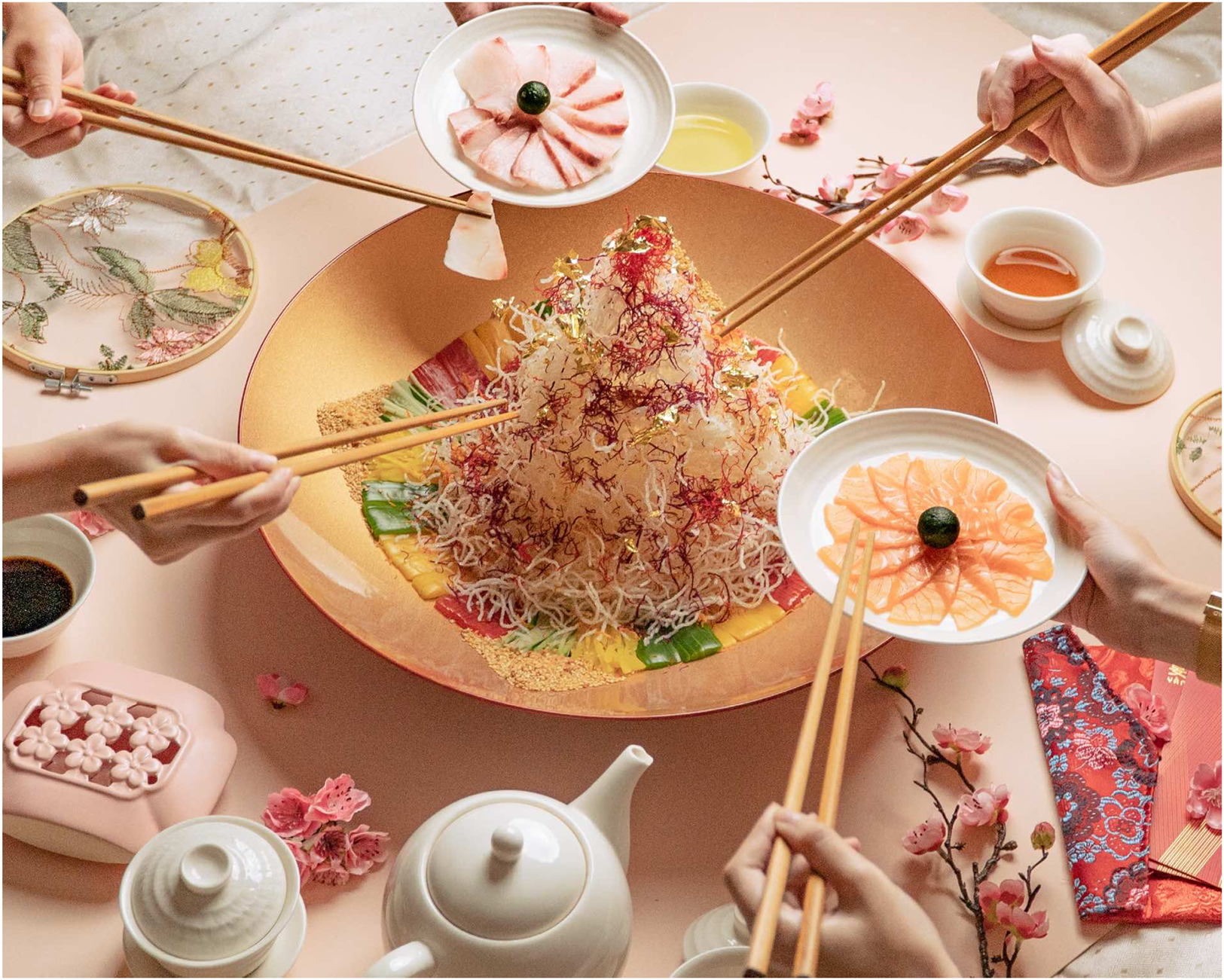
Figure 8. Yusheng (Epicure Asia, 2022)

Figure 9. Lo Hei and Yusheng (2010 to 2022, Singapore and Hong Kong)
Both festive dishes discussed above have illustrated two possible different pathways of lexical interaction which could help us understand how lexicons are created in a multilingual context. The dish poon choi and the mixture drink yuenyeung (see Table 2) both originated from Hong Kong. When these two culinary terms reached Singapore, they might have been converted into ‘new’ English lexical items based on Mandarin pinyin. At the same time, the transliterated words from Cantonese could co-exist in Singapore. However, due to a low level of linguistic vitality of Mandarin in Hong Kong, Cantonese-English bilingual Hongkongers might tend to absorb the translingual words of the same item from Singapore, which is rooted in Cantonese language, and to disregard the words which are romanised based on Mandarin pinyin. The above examples and Table 2 demonstrate that Sinograph is a mediator for the translanguaging between the two Sinitic varieties. Sinography, a traditional logographic writing system in East Asia, is the original textual source which co-exists in both Cantonese and Mandarin. The orthographically mediated space could potentially shape lexical creation and interaction in multilingual societies (see Figure 10). Unlike transliterated practice, Sino-translanguaging does not necessarily happen through language contact with the English language. Multilinguals have a set of mental Sinographs in their minds, which can be used to automatically transfer the lexical items from Sinitic words to romanised alphabets. Thus, Sino-translanguaging practice may spread by a given individual's multilingual competencies, which may shape the global English lexicon.
Table 2. Romanisation of Cantonese culinary words via Sino-translanguaging in different domains


Figure 10. A trajectory of Sino-translanguaging practice between Hong Kong and Singapore
Concluding discussion
As a result of wide consumption of Cantonese cuisine across the globe, culinary terms with Cantonese roots have entered the global English lexicon one way or another. The qualitative findings from this study support Kiaer's ‘sunflower’ model which demonstrates that translingual words grow along with individuals’ multilingual competencies within the speech communities, as well as their degree of lexical interaction. Case studies of translingual words show five different transnational and transcultural practices in the transformation of English vocabulary today. This study argues that Sinograph can function as a mediator of lexical interaction between Hong Kong and Singapore. The above lexical examples show how glocalised commercial powers and bidirectional influences between two Sinitic varieties (Cantonese and Mandarin) are negotiated in the process of word formation and translingual creativity.
The translingual processes undergone by Cantonese culinary terms are superdiverse in their homeland and aboard, their lexical interaction dynamic and sometimes unnoticeable. Figure 11 is pandan cake which refers to a light, fluffy, green sponge cake made with the use of pandan leaf. It can be traced back to the European colonials who brought the cake-making techniques to Southeast Asia. The noun pandan is coined from Malay via either Rumi-alphabet pandan or Jawi-script ڤندان. Pandan cake is also labelled as ‘pandan chiffon cake’ in Singapore more recently to indicate its exoticism and similarity to Western ‘chiffon cake’. The term ‘chiffon’ originated from the US, and it can be translitered as syut fong in Hong Kong and chik fung or qifeng in Singapore respectively. Interestingly, Cantonese dimsum has a similar type of cake usually served in a bamboo steamer. Figure 12 is Malay sponge cake, alight, fluffy, yellow steamed cake. People believe that this type of Cantonese dish has evolved from Southeast Asian pandan cake. Cantonese chefs in either China or Malaysia might have been inspired by the cooking style of pandan cake in the old times. It is known as Ma Lai Gou 馬拉糕 (literally, ‘Malay cake’) in Hong Kong. Hongkongers prefer to use the transliterated word ‘Malay sponge cake’ in English and a small number of Singaporeans adopt its Mandarin-based transliterated form Ma Lai Gao. These superdiverse translingual words show that culinary terms and their meanings are inevitably evolving. Cantonese food has a large range of cooking styles and ingredients. Therefore, a new culinary term can be created due to sociocultural changes such as ingredient shortage, the shift of consumer inertia, and global food trends. Most importantly, words can cross the border more easily than before and people are naming culinary terms via their own personal preferences and experiences in the multilingual sociolinguistic situations of which they are part.
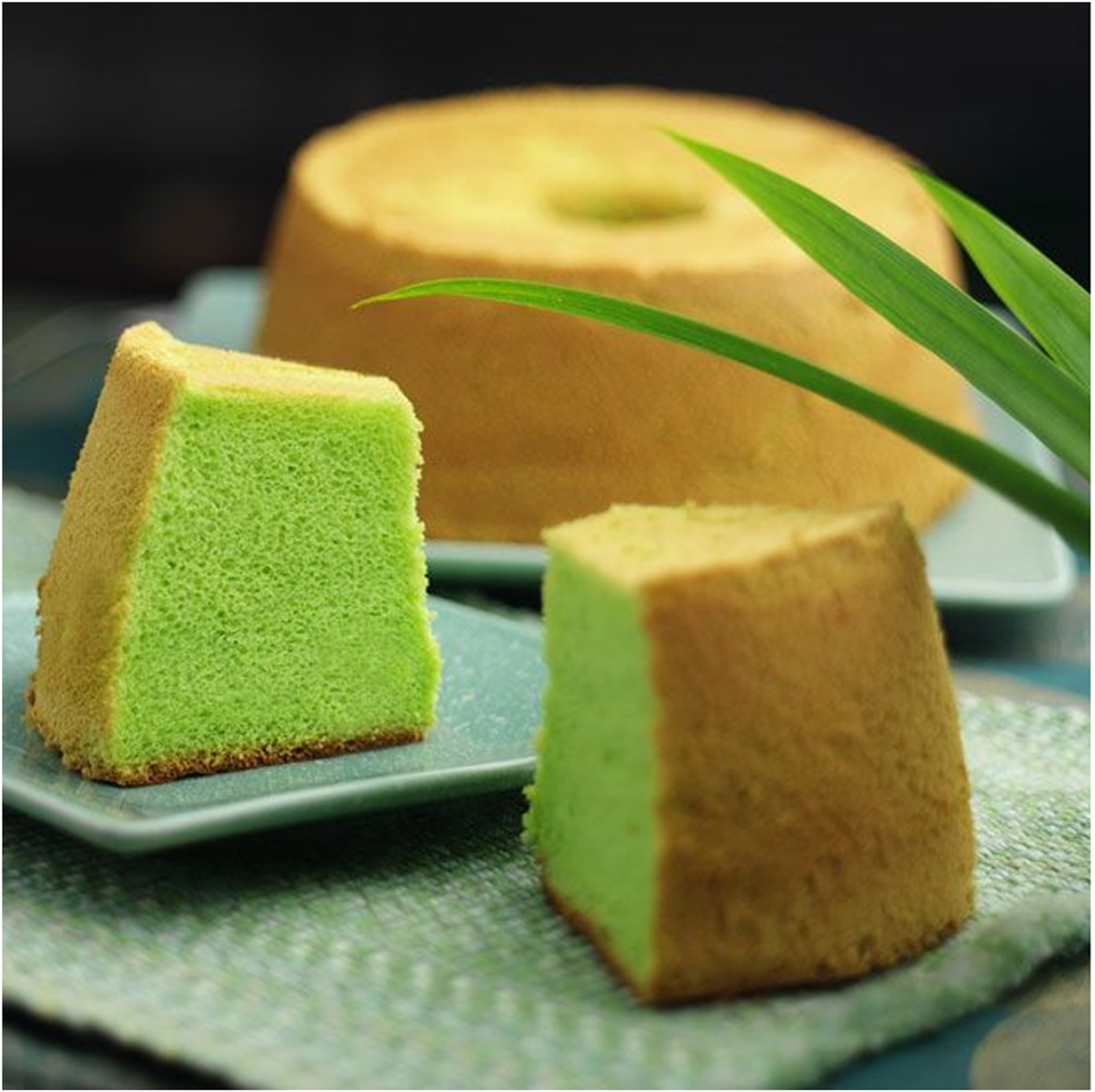
Figure 11. Pandan Chiffon cake (Bengawan Solo, n.d.)
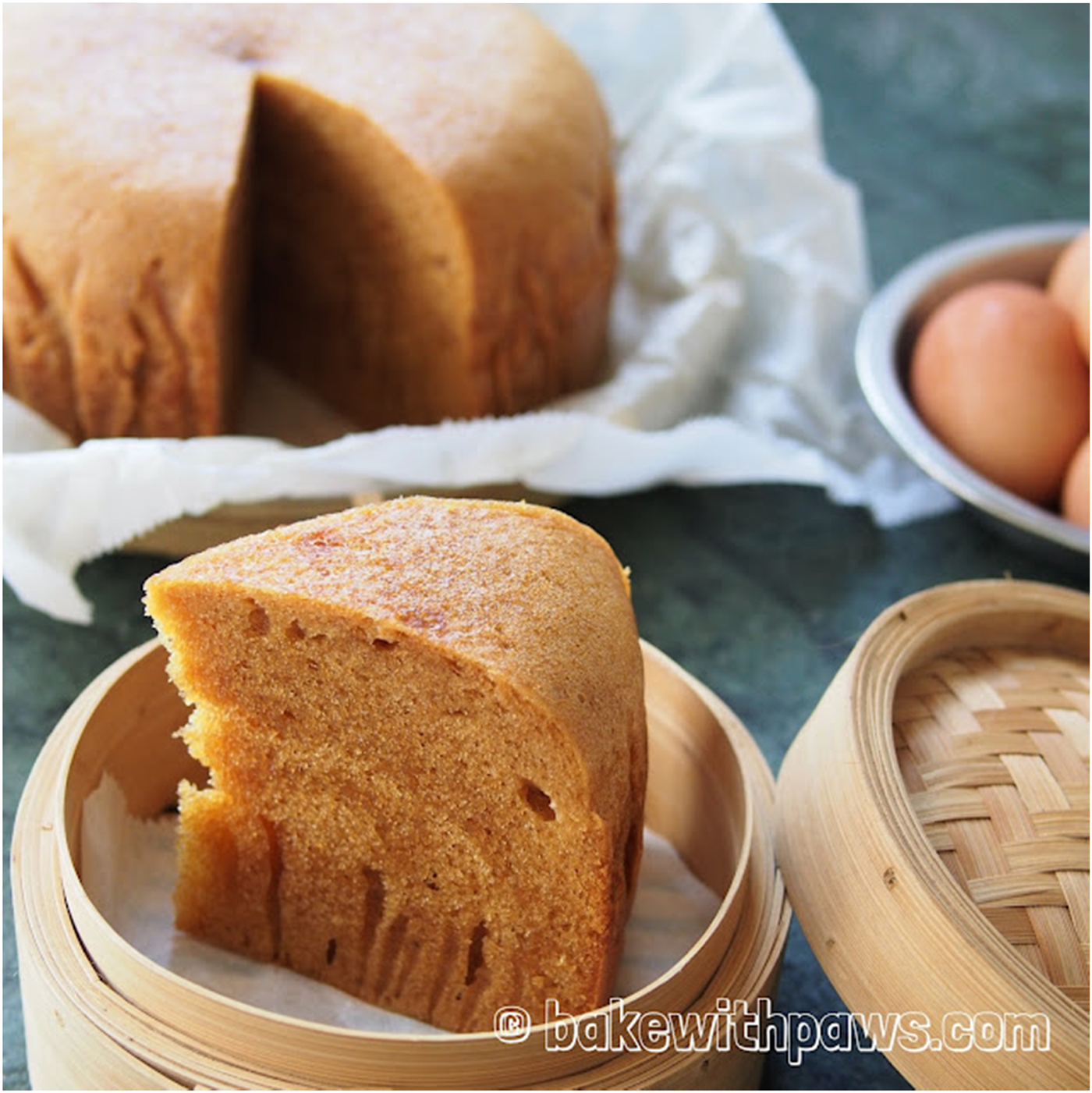
Figure 12. Ma Lai Gao (steamed sponge cake) (Bake with Paws, 2020)
Overall, the paper enhances our understanding of Asian Englishes by offering insights into the lexical interaction of two selected postcolonial English varieties and their bidirectional influences on the word formation. The Cantonese language in Hong Kong and Singapore has been exposed to English and Mandarin more expansively than ever before. This study could help us to understand these two Asian English varieties (Hong Kong English and Singapore English), which can further contribute to the World English Studies, and to provide empirical cases vis-a-vis the ‘sunflower model’. The linguistic forms, semantic meanings, and usage of these culinary terms have rapidly changed in multilingual Asia. It demonstrates that the dynamic lexical interaction in/between the two English varieties may be shaped by different sociocultural factors.
Acknowledgement
The writing of this paper was inspired by numerous exchanges with Shiwei Chen and Christina Low at dining venues in Singapore. Hugo is also grateful to Nicodemus Ler, Xwan Tan, and Jia Jia Teo for providing some of the interesting examples that are discussed in this paper.
 HUGO WING–YU TAM holds a PhD in Applied Linguistics from Nanyang Technological University, Singapore. His research interests include multilingualism, heritage language use, cross-cultural pragmatics, and Asian Englishes with particular emphasis on Hong Kong and Singapore. He was a Visiting Researcher at Chulalongkorn University in Thailand. Email: twingyu@eduhk.hk
HUGO WING–YU TAM holds a PhD in Applied Linguistics from Nanyang Technological University, Singapore. His research interests include multilingualism, heritage language use, cross-cultural pragmatics, and Asian Englishes with particular emphasis on Hong Kong and Singapore. He was a Visiting Researcher at Chulalongkorn University in Thailand. Email: twingyu@eduhk.hk
 SAMUEL C. S. TSANG holds a DPhil (PhD) in Education from the University of Oxford. He is an independent researcher with research interests at the intersection of applied linguistics, pedagogy, language-in-education policy and planning, and multilingualism and transnationalism. Email: samuelcstsang@gmail.com
SAMUEL C. S. TSANG holds a DPhil (PhD) in Education from the University of Oxford. He is an independent researcher with research interests at the intersection of applied linguistics, pedagogy, language-in-education policy and planning, and multilingualism and transnationalism. Email: samuelcstsang@gmail.com



















